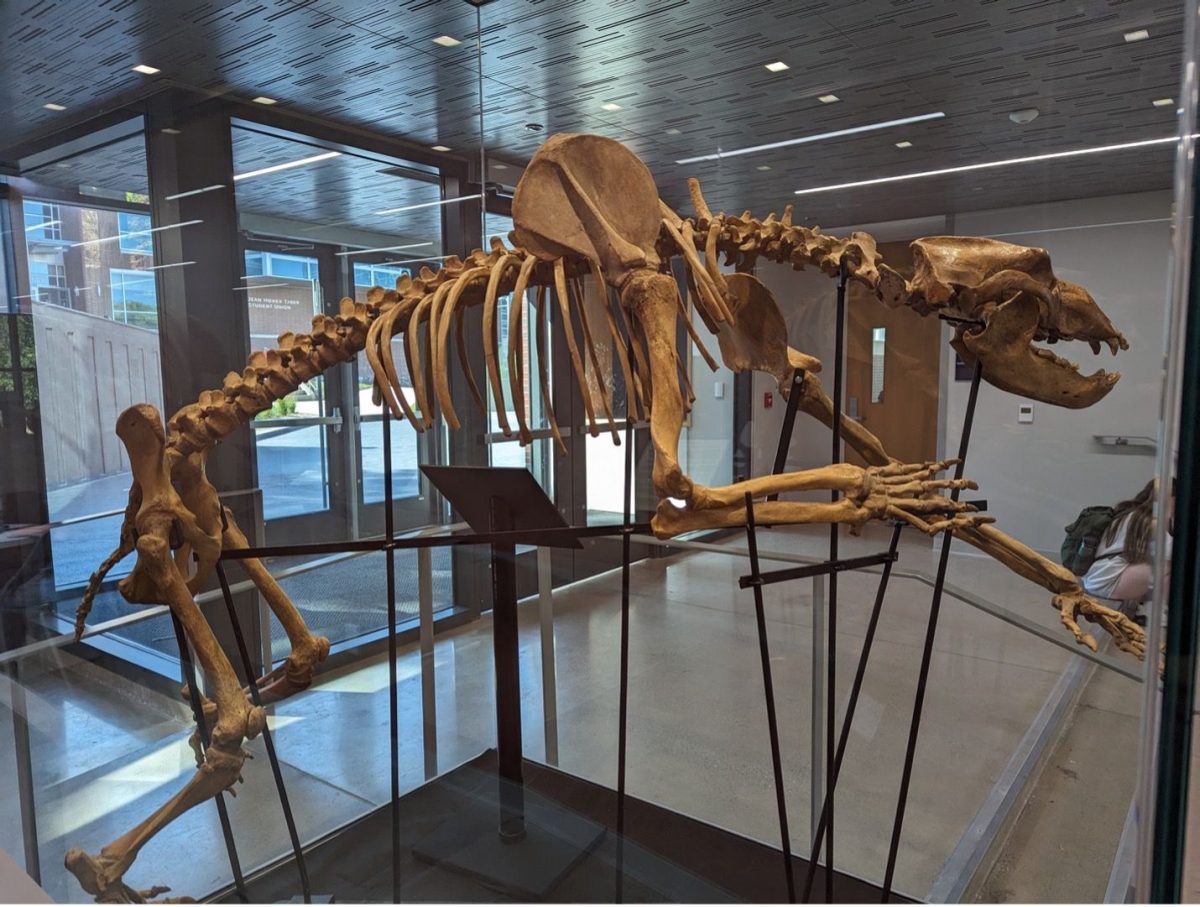Todd Christenson
The Rubber Bowl and Memorial Hall were the two places where everyone gathered to see Ron Tyson play football or Don Williams play basketball. The feeling was electric inside the football stadium starting in the early ’60s. Torrential downpours or a blizzard could not keep the student body away from the stands to watch their “hilltoppers” play football.
These two athletes were among many famous African American athletes that attended The University of Akron and took part in campus support of diversity within sports and athletic programs; their support helped to set the bar for future
black athletes.
Athletics at The University of Akron during the ’60s were predominantly white. About five percent of all student athletes were black. There were few black athletes until the late ’60s and early ’70s. What few African American athletes UA had were usually recruited to play basketball or ran track. It was not until the mid ’60s that a premier black student athlete rose to change the platform for all African Americans. In 1966, Ron Tyson, a football running back, made his way to UA’s campus to play for coach Gordon K. Larson. Tyson broke records as soon as he stepped foot inside the Rubber Bowl. In the same season, Tyson rushed for over 278 yards: beating the school record
by 70 yards. He was later named Zips Athlete of the Year.
Tyson was not the only one who made way for future black athletes at The University of Akron. Cal Person and Len Paul also played important roles in African Americans playing sports in a city and time period where the Ku Klux Klan and segregation were most apparent.
Just after Tyson, an African American track star named Cal Person came to Akron wishing for a title, just like the 1964 Zips cross country team. Unfortunately, he did not reach his goal. He did, however, set an all time record for the 440-yard run (nowadays known as the 400) with an all time low time of 48 seconds. His record still stands today. Track runners in 1964 were mostly white. All the distance runners and field event competitors were white student athletes. Cal Person was one of the most important African American athletes who helped change the future of recruiting and the demographics in sports teams as a whole at The University of Akron.
In 1972-1973 season, the Zips basketball team broke the barrier of having African Americans play select sports. In this season, rated the best Akron basketball season by ESPN, the Zips’ record of 22-5 was one of the best in the nation. Len Paul was a critical part of this successful season. Paul, a Cleveland native, ended his career at Akron as the all time leading scorer with 2,208 points and averaging 18.2 points per game and broke 13 school records. This was a significant event for the “hilltoppers” sports programs. The Akron Zips won the title that year which sparked a generation of athletes that would change Zips athletics forever.
After playing basketball, Paul moved to Cleveland where he started his own business.
However, he always came back to the newly built James A. Rhodes arena to watch the current Zips play basketball.
Today, The University of Akron’s athletics and campus could not be more diverse. The sports teams of today are from all parts of the globe. This would not have been possible if not for Ron Tyson the football star, Cal Person the fastest man at Akron and last but not least, the most electrifying player to play in Memorial Hall’s gym, Len Paul.
These athletes were not just helping African Americans find their way into sports, but to find their way into society. The University has become not only a respected institution for learning, but also a formidable opponent for other sports programs: This is all thanks to these outstanding African American student athletes who set the bar where others thought it could never be set. The athletes changed the landscape of Akron as a city, as well as the philosophy of students at The University of Akron forever.











